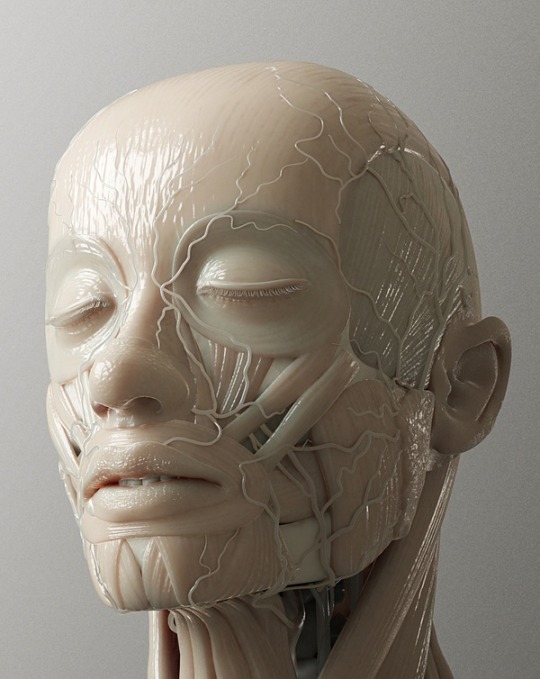Video
youtube
Latest CogTalk video online...immersive worlds and story telling in the digital age
#cogtalk#plymouthCognitionInstitute#storytelling#psychology#Grublin Games#pervasive games#the lost index
0 notes
Photo
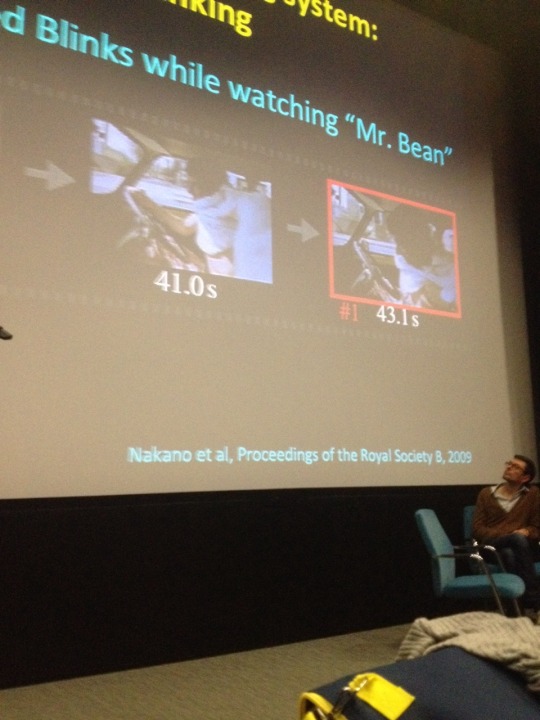
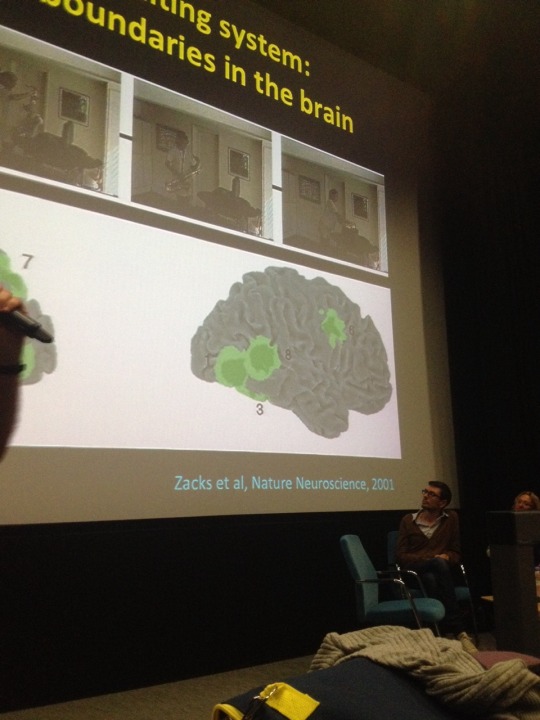
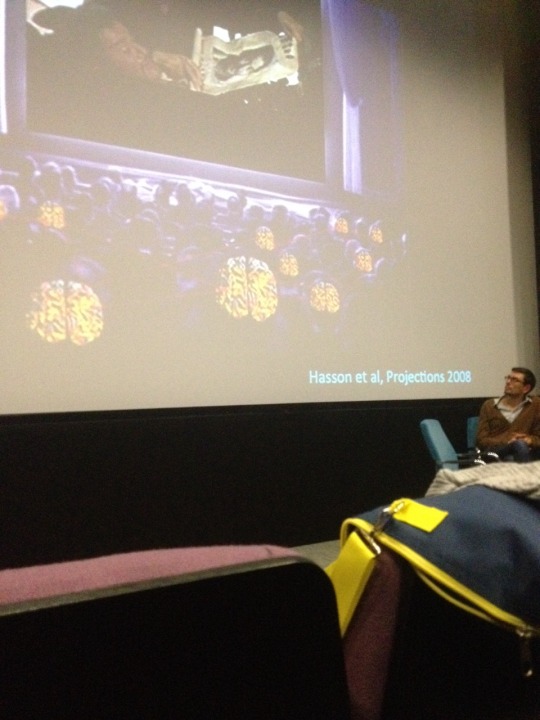

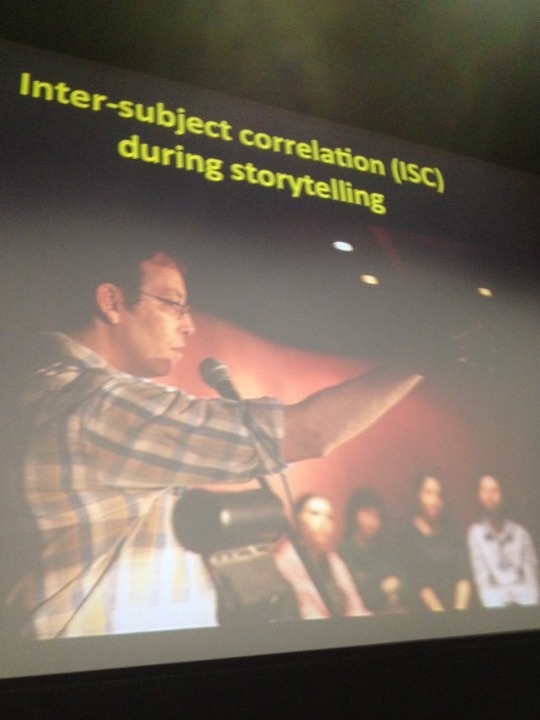
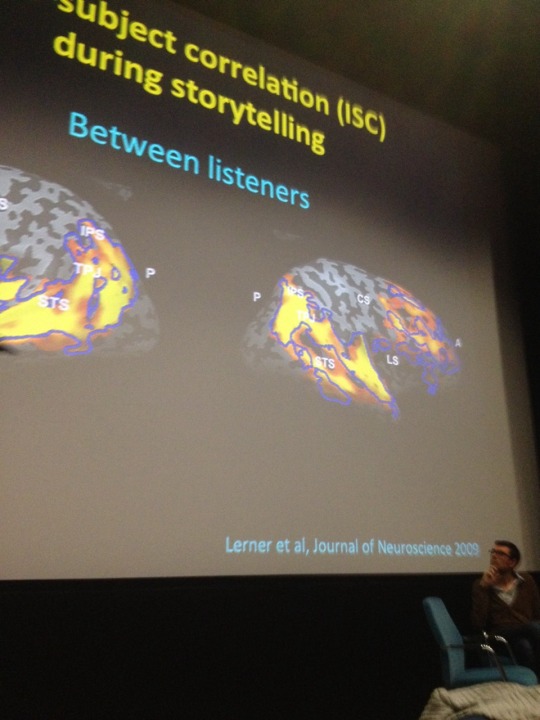
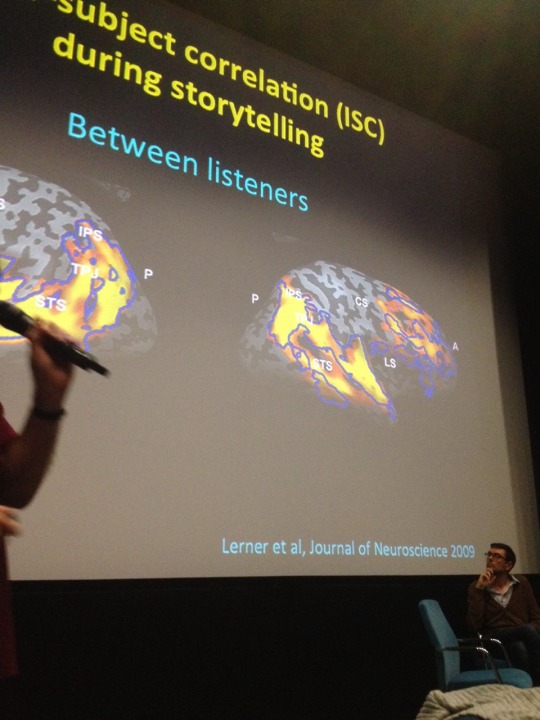


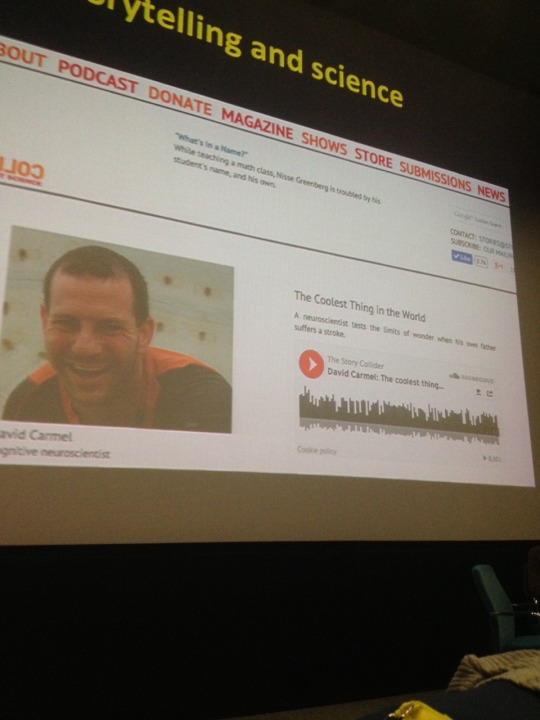
Great CogTalk at Plymouth Uni last night about storytelling, games, and cognition. The most fascinating thing for me was report findings on how our brain responds to storytelling experiences such as the movies. There is a high degree of intersubject agreement in neural activity. That is to say, people’s brain respond similarly to narrative structures, and we tend to respond more synchronously to well-established and culturally-meaningful narrative structures (say, a Hitchcock film) than to, say, a filmed piece of “unstructured” reality. There is also similar brain activity between the storyteller and the audience.
2 notes
·
View notes
Video
youtube
CogNovo Research fellow Agi Haines talking at TEDx Maastricht about designing the human body
www.cognovo.eu
1 note
·
View note
Photo

Evan Fowler looked into the art history and explained the term “Kitsch” at the House News.
Hong Kong: Seeing Kitsch in Art
5K notes
·
View notes
Link
Pamela L. Gay is an astronomer and science educator. You might know her from Astronomy cast or Cosmoquest.org. She is also a well known skeptic.
In 2008 Pamela L. Gay, also know as StarStryder, was harassed at a science fiction convention. She opted to remain silent, but even that decision has resulted at threats being made at her address by both the harasser as a person who helped her.
Read her heartbreaking story here.
92 notes
·
View notes
Photo

Heaven is for neuroscience: How the brain creates visions of God
-
Major figures like Joan of Arc and Dostoyevsky claimed supernatural visions. Why their brains could hold the answer
Sam Kean
-
For most of recorded history, human beings situated the mind — and by extension the soul — not within the brain but within the heart. When preparing mummies for the afterlife, for instance, ancient Egyptian priests removed the heart in one piece and preserved it in a ceremonial jar; in contrast, they scraped out the brain through the nostrils with iron hooks, tossed it aside for animals, and filled the empty skull with sawdust or resin. (This wasn’t a snarky commentary on their politicians, either—they considered everyone’s brain useless.) Most Greek thinkers also elevated the heart to the body’s summa. Aristotle pointed out that the heart had thick vessels to shunt messages around, whereas the brain had wispy, effete wires. The heart furthermore sat in the body’s center, appropriate for a commander, while the brain sat in exile up top. The heart developed first in embryos, and it responded in sync with our emotions, pounding faster or slower, while the brain just sort of sat there. Ergo, the heart must house our highest faculties. Meanwhile, though, some physicians had always had a different perspective on where the mind came from. They’d simply seen too many patients get beaned in the head and lose some higher faculty to think it all a coincidence. Doctors therefore began to promote a brain-centric view of human nature. And despite some heated debates over the centuries—especially about whether the brain had specialized regions or not—by the 1600s most learned men had enthroned the mind within the brain. A few brave scientists even began to search for that anatomical El Dorado: the exact seat of the soul within the brain. One such explorer was Swedish philosopher Emanuel Swedenborg, one of the oddest ducks to ever waddle across the stage of history. Swedenborg’s family had made a fortune in mining in the late 1600s, and although he was raised in a pious household — his father wrote hymns for his daily bread and later became a bishop — Swedenborg devoted his life to physics, astronomy, and geology. He was the first person to suggest that the solar system formed when a giant cloud of space dust collapsed in upon itself, and much like Leonardo he sketched out plans for airplanes, submarines, and machine guns in his diaries. Contemporaries called him “the Swedish Aristotle.”
keep on reading..
(via Heaven is for neuroscience: How the brain creates visions of God - Salon.com)
135 notes
·
View notes
Text
Dis. Collective Open Call
Dis. Collective are looking for artists to exhibit at our next event.
Artist can apply by emailing [email protected] or by contacting Dis. Collective via Facebook or Tumblr. To apply, artists must submit their name and examples of their work. Please email documentation of artwork to the above email address or supply a web link to a blog or website exhibiting your artwork.
- Dis. Collective
6 notes
·
View notes
Link
"This past weekend at Everett & Jones restaurant in Jack London Square, there was a gathering of more than 10 mothers and members of their family who have all lost sons, daughters and husbands to police violence over the past 2 years…It was sobering, powerful and healing. It was also shocking to see so many families and hear story after story of how they lost loved ones to police terror. We heard from the mothers of Kenneth Harding, Derick Jones, Derrick Gaines, Rahiem Brown Jr, James Rivera and Oscar Grant..all gunned down by police.
The families came together for the second anniversary of Oscar Grant Verdict Day.. This was the day that a jury in Los Angeles, handed down their controversial decision about Johannes Mehserle, the killer cop who shot an unarmed handcuffed Oscar Grant in the back at point-blank range in front of hundreds of BART subway riders in Oakland, Ca on New Years morning 2009. Millions of people all over the world saw the shocking video and just knew that Mehersle would go to jail for a long time over his egregious actions.
On July 8th 2010, the LA jury came back with a verdict of involuntary manslaughter which left thousands of people who had gathered in downtown Oakland stunned. Adding insult to injury, the Grant verdict was overshadowed by another ‘controversial decision’ being made that day-What basketball team NBA star Lebron James would choose. Many in the national media gave their time and attention to James and the NBA while folks in Oakland and the Bay Area were left pondering the injustice that was served before them after 18 long months of organizing and jumping over legal hurdle after legal hurdle.
Many that day walked away thinking that while the verdict was unjust that hopefully police got the message and would change their ways. There would be more caution and concern exercised by police departments, not just in Oakland, but all over the country. This weekends gathering was proof that if anything the Grant verdict emboldened police to act with reckless abandon.
Unarmed Rekia Boyd was shot in the head by a Chicago Cop
Instead of a decline in police violence we seen a marked increase. Since the Grant verdict day, we’ve seen an outrageous 680 thousand people stopped and frisked in New York with over 90% of those stops being Black and Brown men with less than 5% resulting in any weapons recovered. Stop and Frisk led to the shooting death of unarmed Ramarley Graham We’ve seen police shoot a motorist Hernendez L Dowdy in Memphis, Tn after someone falsely accused him of car jacking. We’ve seen police in Pasadena shoot 19-year-old Kendrec McDade falsely accused of stealing a computer. We seen an officer in Chicago shoot an innocent bystander named Rekia Boyd after he mistakenly thought the man standing next to her had a gun.. We seen police in White Plains New York shoot unarmed army vet, a senior citizen named Kenneth Chamberlain Sr.. who accidently set off his medical alert pendant. The officer at the center of the killing has a sordid history of brutality and racism. .. We seen Oakland police shoot high school senior Alan Bluford in the back and then lie about the self-inflicted wound the officer suffered. He shot himself and blamed Bluford. OPD has still refused to officially identify the officer.
We could go on for days citing story after story along with the fact that in many cities all over the United States police brutality incidents and police killing civilians are on the rise..For example, in Los Angeles which was supposed to have drastically reformed their police department, we seen a huge increase in police shootings. The department tried to blame it on citizens attacking them more. That assertion has since been disputed.Whats crazy about LA is that police pushed to get the city council to support a law that will keep officers records sealed from the public.
The bottom line is this.. Police are out of control and when it comes to Black people they are even more so..Today the Malcolm X Grassroots Movement released a Report on Extrajudicial Killings …Its pretty detailed and extensive.. It shows that since Jan 1 2012 , they have documented 110 Black people being killed. That amounts to one Black person being killed by police every 40 hours.. Since the shooting death of Trayvon Martin police and shot and killed over 80 Black people..This is outrageous and unacceptable..”
1K notes
·
View notes
Photo


#WeNeedDiverseBooks because no characters in YA books looks like me.
#WeNeedDiverseBooks because I have a story too.
Submitted by Tye Jiles
14K notes
·
View notes
Photo
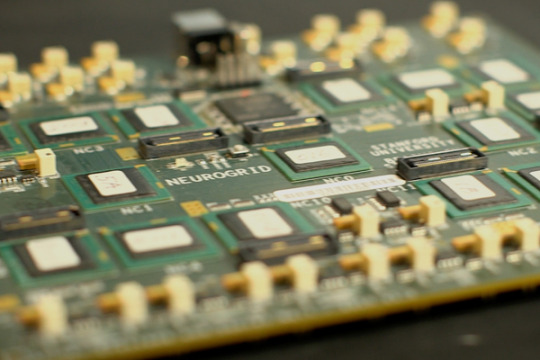
Bioengineers create circuit board modeled on the human brain
Stanford bioengineers have developed faster, more energy-efficient microchips based on the human brain – 9,000 times faster and using significantly less power than a typical PC. This offers greater possibilities for advances in robotics and a new way of understanding the brain. For instance, a chip as fast and efficient as the human brain could drive prosthetic limbs with the speed and complexity of our own actions.
Stanford bioengineers have developed a new circuit board modeled on the human brain, possibly opening up new frontiers in robotics and computing.
For all their sophistication, computers pale in comparison to the brain. The modest cortex of the mouse, for instance, operates 9,000 times faster than a personal computer simulation of its functions.
Not only is the PC slower, it takes 40,000 times more power to run, writes Kwabena Boahen, associate professor of bioengineering at Stanford, in an article for the Proceedings of the IEEE.
"From a pure energy perspective, the brain is hard to match," says Boahen, whose article surveys how "neuromorphic" researchers in the United States and Europe are using silicon and software to build electronic systems that mimic neurons and synapses.
Boahen and his team have developed Neurogrid, a circuit board consisting of 16 custom-designed “Neurocore” chips. Together these 16 chips can simulate 1 million neurons and billions of synaptic connections. The team designed these chips with power efficiency in mind. Their strategy was to enable certain synapses to share hardware circuits. The result was Neurogrid – a device about the size of an iPad that can simulate orders of magnitude more neurons and synapses than other brain mimics on the power it takes to run a tablet computer.
The National Institutes of Health funded development of this million-neuron prototype with a five-year Pioneer Award. Now Boahen stands ready for the next steps – lowering costs and creating compiler software that would enable engineers and computer scientists with no knowledge of neuroscience to solve problems – such as controlling a humanoid robot – using Neurogrid.
Its speed and low power characteristics make Neurogrid ideal for more than just modeling the human brain. Boahen is working with other Stanford scientists to develop prosthetic limbs for paralyzed people that would be controlled by a Neurocore-like chip.
"Right now, you have to know how the brain works to program one of these," said Boahen, gesturing at the $40,000 prototype board on the desk of his Stanford office. "We want to create a neurocompiler so that you would not need to know anything about synapses and neurons to able to use one of these."
Brain ferment
In his article, Boahen notes the larger context of neuromorphic research, including the European Union’s Human Brain Project, which aims to simulate a human brain on a supercomputer. By contrast, the U.S. BRAIN Project – short for Brain Research through Advancing Innovative Neurotechnologies – has taken a tool-building approach by challenging scientists, including many at Stanford, to develop new kinds of tools that can read out the activity of thousands or even millions of neurons in the brain as well as write in complex patterns of activity.
Zooming from the big picture, Boahen’s article focuses on two projects comparable to Neurogrid that attempt to model brain functions in silicon and/or software.
One of these efforts is IBM’s SyNAPSE Project – short for Systems of Neuromorphic Adaptive Plastic Scalable Electronics. As the name implies, SyNAPSE involves a bid to redesign chips, code-named Golden Gate, to emulate the ability of neurons to make a great many synaptic connections – a feature that helps the brain solve problems on the fly. At present a Golden Gate chip consists of 256 digital neurons each equipped with 1,024 digital synaptic circuits, with IBM on track to greatly increase the numbers of neurons in the system.
Heidelberg University’s BrainScales project has the ambitious goal of developing analog chips to mimic the behaviors of neurons and synapses. Their HICANN chip – short for High Input Count Analog Neural Network – would be the core of a system designed to accelerate brain simulations, to enable researchers to model drug interactions that might take months to play out in a compressed time frame. At present, the HICANN system can emulate 512 neurons each equipped with 224 synaptic circuits, with a roadmap to greatly expand that hardware base.
Each of these research teams has made different technical choices, such as whether to dedicate each hardware circuit to modeling a single neural element (e.g., a single synapse) or several (e.g., by activating the hardware circuit twice to model the effect of two active synapses). These choices have resulted in different trade-offs in terms of capability and performance.
In his analysis, Boahen creates a single metric to account for total system cost – including the size of the chip, how many neurons it simulates and the power it consumes.
Neurogrid was by far the most cost-effective way to simulate neurons, in keeping with Boahen’s goal of creating a system affordable enough to be widely used in research.
Speed and efficiency
But much work lies ahead. Each of the current million-neuron Neurogrid circuit boards cost about $40,000. Boahen believes dramatic cost reductions are possible. Neurogrid is based on 16 Neurocores, each of which supports 65,536 neurons. Those chips were made using 15-year-old fabrication technologies.
By switching to modern manufacturing processes and fabricating the chips in large volumes, he could cut a Neurocore’s cost 100-fold – suggesting a million-neuron board for $400 a copy. With that cheaper hardware and compiler software to make it easy to configure, these neuromorphic systems could find numerous applications.
For instance, a chip as fast and efficient as the human brain could drive prosthetic limbs with the speed and complexity of our own actions – but without being tethered to a power source. Krishna Shenoy, an electrical engineering professor at Stanford and Boahen’s neighbor at the interdisciplinary Bio-X center, is developing ways of reading brain signals to understand movement. Boahen envisions a Neurocore-like chip that could be implanted in a paralyzed person’s brain, interpreting those intended movements and translating them to commands for prosthetic limbs without overheating the brain.
A small prosthetic arm in Boahen’s lab is currently controlled by Neurogrid to execute movement commands in real time. For now it doesn’t look like much, but its simple levers and joints hold hope for robotic limbs of the future.
Of course, all of these neuromorphic efforts are beggared by the complexity and efficiency of the human brain.
In his article, Boahen notes that Neurogrid is about 100,000 times more energy efficient than a personal computer simulation of 1 million neurons. Yet it is an energy hog compared to our biological CPU.
"The human brain, with 80,000 times more neurons than Neurogrid, consumes only three times as much power," Boahen writes. "Achieving this level of energy efficiency while offering greater configurability and scale is the ultimate challenge neuromorphic engineers face."
376 notes
·
View notes
Link
For anyone who often feels the wrong words sometimes fall out of your mouth this study may be reassuring....or not :-)
Our awareness of our own speech often comes after the words have left our mouth, not before.
-
If you think you know what you just said, think again. People can be tricked into believing they have just said something they did not, researchers report this week.The dominant model of how speech works is that it is planned in advance — speakers begin with a conscious idea of exactly what they are going to say. But some researchers think that speech is not entirely planned, and that people know what they are saying in part through hearing themselves speak. So cognitive scientist Andreas Lind and his colleagues at Lund University in Sweden wanted to see what would happen if someone said one word, but heard themselves saying another. “If we use auditory feedback to compare what we say with a well-specified intention, then any mismatch should be quickly detected,” he says. “But if the feedback is instead a powerful factor in a dynamic, interpretative process, then the manipulation could go undetected.” In Lind’s experiment, participants took a Stroop test — in which a person is shown, for example, the word ‘red’ printed in blue and is asked to name the colour of the type (in this case, blue). During the test, participants heard their responses through headphones. The responses were recorded so that Lind could occasionally play back the wrong word, giving participants auditory feedback of their own voice saying something different from what they had just said. Lind chose the words ‘grey’ and ‘green’ (grå and grön in Swedish) to switch, as they sound similar but have different meanings. After participants heard a manipulated word, a question popped up on the screen asking what they had just said, and they were also quizzed after the test to see whether they had detected the switch. When the voice-activated software got the timing just right — so that the wrong word began within 5–20 milliseconds of the participant starting to speak — the change went undetected more than two-thirds of the time. And in 85% of undetected substitutions, the participant accepted that they had said the wrong word, indicating that speakers listen to their own voices to help specify the meaning of what they are saying. The remaining 15% didn’t notice the manipulations, but also didn’t seem to notice that the word had changed, and Lind says it is unclear why. The results are published this week in Psychological Science.
337 notes
·
View notes
Photo

NEW ‘GOOGLE’ FOR THE DARK WEB MAKES BUYING DOPE AND GUNS EASY»
287 notes
·
View notes
Link
Another type of adaptive process in sensory neurons? Interesting research
How nerve cells flexibly adapt to acoustic signals: Depending on the input signal, neurons generate action potentials either near or far away from the cell body. This flexibility improves our ability to localize sound sources.

(Image caption: A neuron in the brain stem, that processes...
121 notes
·
View notes



